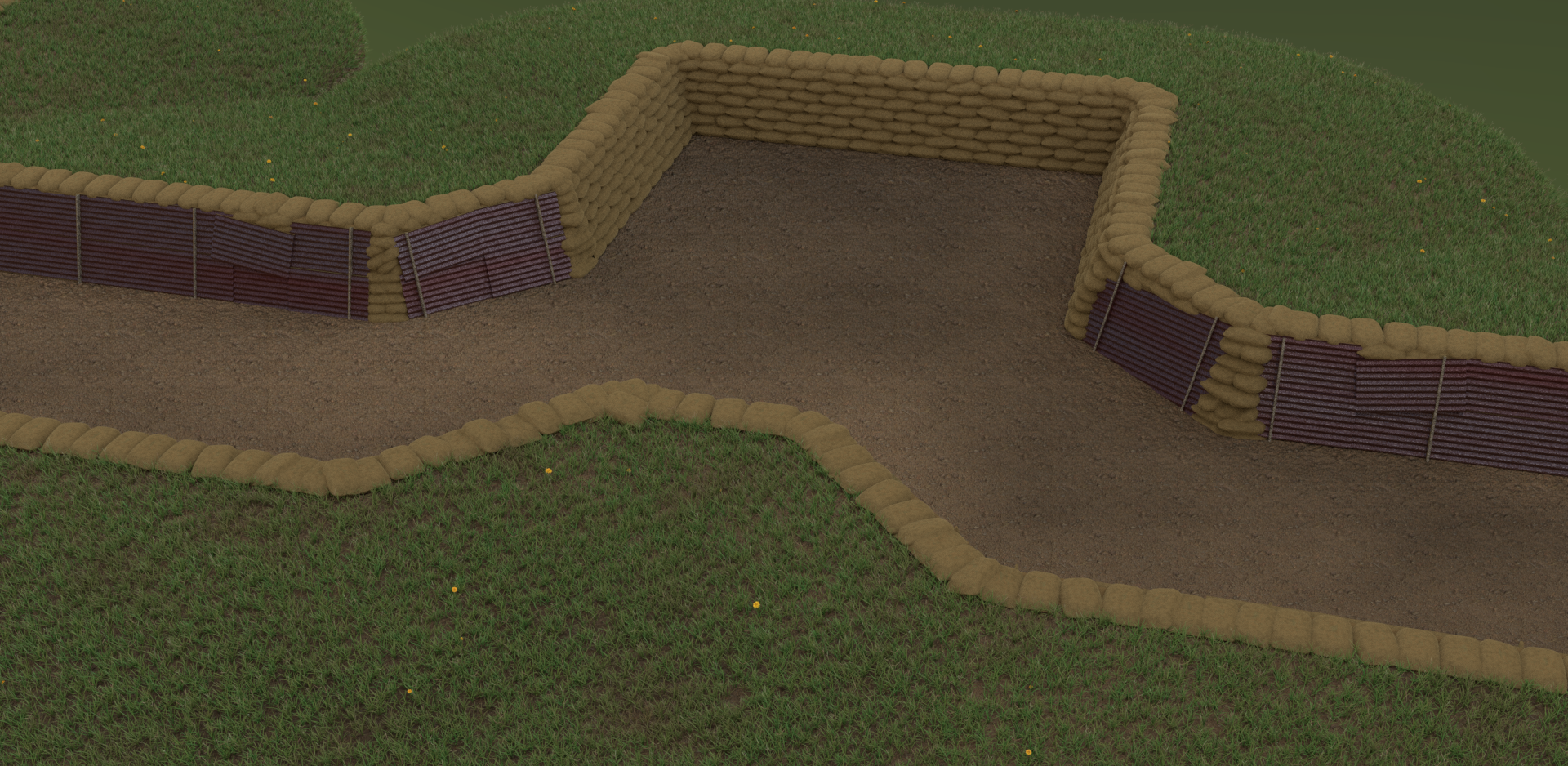
Many companies already make a trench system, so why are we planning on making another one? Trenches intended to be used in miniature games are really an artistic representation, and it is very difficult to balance realism with playability. Details have to be exaggerated or minimized to make them usable as gaming terrain. Personal preferences become very important in this and different people have different ideas on what actually looks the best. We simply have a different approach to doing trenches that we think will work better.
Almost all miniature games have the figures mounted on some sort of base. Even in the skirmish level games where the miniatures are generally mounted singly, these bases are wider (scale wise) than most trenches. In a game like Flames of War the bases are sized to represent a unit in formation, so the problem is even greater. This results in very unrealistically wide trenches, (if you want to use the standard game basing format), or one-sided trenches.
Another serious problem with gaming trenches is that they either have to be placed on a table top, or be incorporated into very thick terrain tiles. This often results in something that looks considerably more like a barricade than it does like a trench that was cut into the ground. For this reason we have chosen to make our trenches a little shallower than typical, with a wider glacis. Having a lower and wider glacis allows the trenches to blend into the tabletop with a gentle slope instead of an abrupt wall. As an added bonus it also makes it possible to place models outside, right up to the lip of the trench.
Making the trenches shallower isn’t as big a problem as it would first seem. Historically speaking trenches could be quite shallow, (especially if they are in the earlier stages of being constructed). Waist high trenches were quite common so they are very easy to justify.
Not all trenches used revetments, but we decided to use corrugated sheet metal and sandbags for this purpose. These are two very common materials that could frequently be found on most battlefields. They are also easy materials to paint, and look really nice when done.
Our goal is to make a trench system that looks as close as possible to a real one, while retaining maximum play-ability. The trenches can be assembled to zig zag as the owner pleases, and a serious effort is being made to preserve the feel of a fighting position.






















